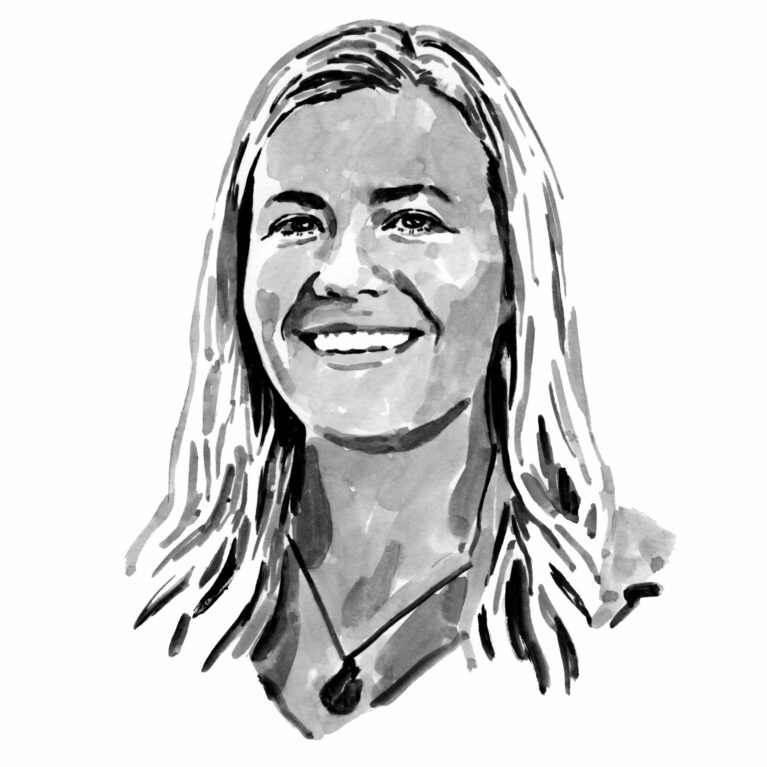Eva Ramey

Who I am
I grew up far from the ocean, but despite having lived in the mountains of Colorado and the deserts of Namibia, I found that I’m most at home in the sea. When I was a child, I was introduced to conservation ecology while working with my parents on their research on desert-dwelling elephants in Namibia. This experience led to my lifelong passion and career in research and conservation of unique animals and wild places.
Through my marine biology studies in Tanzania, I discovered my love for the ocean and saw at first hand the impacts that humans are having on the oceans. I first started working with elasmobranchs as a student in the Turks and Caicos Islands. Learning about global shark population declines sparked a new passion for me. I earned my Master’s degree from Scripps Institution of Oceanography at the University of California San Diego, where my research involved examining shark distribution patterns in response to environmental stressors and human impacts in the Florida Keys. My PhD research at Victoria University of Wellington focuses on understanding the importance of New Zealand’s temperate deep-water reef habitats for coastal sharks and fish communities so that we can protect these important animals and little-known ecosystems and ensure that they survive into the future.
Where I work
I grew up far from the ocean, but despite having lived in the mountains of Colorado and the deserts of Namibia, I found that I’m most at home in the sea. When I was a child, I was introduced to conservation ecology while working with my parents on their research on desert-dwelling elephants in Namibia. This experience led to my lifelong passion and career in research and conservation of unique animals and wild places.
I am blessed to work in the beautiful waters around Aotearoa/New Zealand, including one of the most remote and breathtaking wilderness areas of the world, Te Moana o Atawhenua (Fiordland). This iconic World Heritage Site is in the southern region of the South Island and is New Zealand’s largest national park. In Fiordland, snow-covered peaks tower overhead and temperate rainforests stretch to the edges of fiords. The area experiences about seven metres (23 feet) of rainfall a year, but on calm days the reflections of the peaks on the glassy surface of the water are mesmerising.
Fiordland’s marine life is both diverse and distinctive, reflecting the area’s ecological significance. Ancient black corals loom out of the darkness in the depths of the fiords and contribute to the complex marine habitat that provides shelter for various fish. While scuba diving in the fiords, we regularly encounter sharks. They often swim up close, showing curiosity about people underwater.
When I’m not in Fiordland, I can be found studying the marine environments along the wild south coast of Wellington at the southern end of the North Island and the colourful temperate reefs of the Poor Knights Islands Marine Reserve in the north of New Zealand.
What I do
My favourite days at work are days I spend in and on the water. Tracking shark movements involves the use of acoustic receivers, so my typical day in the field starts off by fishing for sharks and carefully tagging them with an acoustic transmitter. The transmitter sends a unique identifying signal to underwater acoustic receivers that are listening in the area. The receivers record the pings from tagged sharks as they swim by, but the receivers regularly need to be retrieved to offload this information. To do this, my dive buddy and I use scuba to dive down to the receiver moorings and change the devices.
When we get back on board the boat, we deploy the remote-operated vehicle (ROV) to conduct habitat surveys of the fiord’s deep reefs that we cannot reach by diving. It is always fascinating to see the alien-like world of the deep fiords unfold on the live video feed from the ROV. Having deployed the ROV, we drop a baited underwater video camera over the side of the boat to survey the fish communities and gain a broader picture of the abundance and distribution of the prey species available to sharks.
Field work on the boat feels like a privilege, but back in the lab the work can feel just as exciting and rewarding. I have always enjoyed puzzles and the process of analysing and modelling all the data gathered in the field is the most rewarding puzzle of all.
